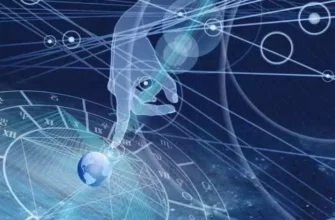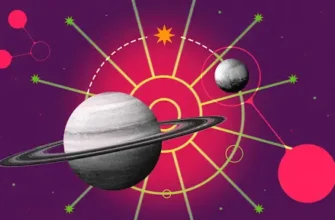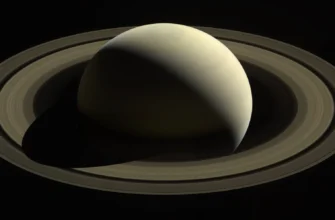- Planetary Aspects in Astrology: Meaning and Influence in the Natal Chart
- What Is an Aspect and How Does It Work?
- Major Aspects: Core Configurations of Astrological Interpretation
- Conjunction (0°)
- Opposition (180°)
- Square (90°)
- Trine (120°)
- Sextile (60°)
- Minor Aspects: Subtle Influences and Deeper Layers
- Aspect Energy: Harmony vs. Destruction
- Friendly Planets: Venus and Jupiter
- Malefic but Energetically Compatible: Mars and Saturn
- Energetic Enemies: Venus and Saturn
- Venus and Neptune: The Danger of Idealization
- Venus and Mars: Love Meets Fire
- Mercury: Context-Dependent Nature
- Aspects in Progressions and Directions
- Conclusion
Planetary Aspects in Astrology: Meaning and Influence in the Natal Chart
In astrology, planetary aspects are essential for interpreting the natal chart. These aspects represent specific angular relationships between planets as viewed from Earth at the moment of a person’s birth. Far from being just lines on a chart, aspects are dynamic energy pathways that reveal how planetary forces collaborate or clash. They determine whether the planetary interaction is harmonious, challenging, or neutral — shaping personality, behavior, and life experience.
What Is an Aspect and How Does It Work?
Imagine standing beneath a starry sky. You point one hand at one star and the other hand at another. The angle formed between your hands is similar to the celestial angle between two planets. If this angle matches a predefined number (like 90°, 120°, or 180°), it creates an astrological aspect.
In astrology software, aspects are usually visualized as colored lines connecting planets across the chart. The full zodiacal circle is 360°, and aspects are created by dividing this circle by whole numbers. These angular relationships define how planetary energies interact, setting the tone for either cooperation or conflict.
Major Aspects: Core Configurations of Astrological Interpretation
Major (or “hard”) aspects are the most powerful and commonly used in natal and predictive astrology. They form the foundation for understanding how planetary dynamics shape your character and destiny.
Conjunction (0°)
The conjunction occurs when two planets are very close together in the sky, usually within a few degrees. Their energies merge and intensify, often acting as one combined force. The effect of a conjunction depends heavily on the planets involved and the tightness of the aspect.
For instance, a conjunction between the Sun and Mercury is typically favorable, enhancing communication and clarity. However, if the distance is too close, Mercury may become “combust,” weakening its effectiveness in communication and thought.
Opposition (180°)
An opposition places two planets directly across from each other in the chart. While often considered a challenging or dynamic aspect, oppositions also provide motivation, tension, and growth.
This aspect brings internal conflict and often manifests as polarized desires or extremes in behavior. When approached with awareness and balance, oppositions can lead to powerful personal development and emotional resilience.
Square (90°)
A square is a tense and friction-filled aspect, symbolizing a clash between planets that forces action or resolution. These conflicts are often internal and recurring, like recurring life patterns or personal dilemmas.
Squares represent areas of deep struggle, where opposing forces within the self must be reconciled. A common example is the conflict between career ambition and emotional needs — both pulling in different directions.
Trine (120°)
The trine is one of the most harmonious and beneficial aspects in astrology. When planets are trine, their energies flow naturally and supportively, enhancing ease, grace, and innate talent.
Trines often show where things come effortlessly — creative gifts, emotional strength, or social charm. However, the ease of this aspect can also lead to complacency if the talents it brings aren’t actively used.
Sextile (60°)
The sextile is a milder harmonious aspect, fostering cooperation and productive energy. It supports learning, collaboration, communication, and moderate opportunity, especially in intellectual and social domains.
While not as powerful as the trine, sextiles still provide positive momentum, especially when planets share compatible elements or themes.
Minor Aspects: Subtle Influences and Deeper Layers
In addition to the major aspects, astrology includes a wide variety of minor aspects, which add nuance and detail. Though less powerful, they offer a refined understanding of inner tensions, hidden traits, and subconscious motivations.
Here are some of the most commonly used minor aspects:
-
Semi-square (45°) – A tense aspect often indicating low-level internal pressure or unresolved issues.
-
Sesquiquadrate (135°) – Another challenging aspect, reflecting restlessness or disruptive impulses.
-
Semi-sextile (30°) – A neutral or subtle connection that may support development when activated by other factors.
-
Quincunx (150°) – An aspect of incompatibility, often leading to discomfort, adjustment, or misalignment.
-
Quintile (72°) and biquintile (144°) – Considered creative and harmonious, often linked to artistic genius, inspiration, or unusual talents.
It’s important to remember that minor aspects have smaller orbs of influence, making their effects more refined and situation-dependent.
Aspect Energy: Harmony vs. Destruction
All aspects reflect interactions between planetary energies. These connections can be constructive or destructive, depending on two key factors:
-
The intrinsic nature of the planets involved — Are they energetically friendly or antagonistic?
-
The type of aspect itself — Is it harmonious or tense?
Friendly Planets: Venus and Jupiter
When Venus and Jupiter, both considered “benefic” planets, form a harmonious aspect (like a trine or sextile), their positive qualities are enhanced — love, joy, prosperity, and abundance. Even when they form tense aspects, the results are typically more neutral than negative. These aspects may point to excess, indulgence, or over-optimism rather than genuine harm.
Malefic but Energetically Compatible: Mars and Saturn
Both Mars and Saturn are traditionally considered malefic, but they share a compatible energetic structure. In harmonious aspects, they promote discipline, focused energy, and strategic ambition. But in tense configurations, they can produce hardship, aggression, frustration, or loss. These aspects often mark karmic challenges and deep life lessons.
Energetic Enemies: Venus and Saturn
Venus and Saturn are inherently opposed in energy. Even in harmonious aspects, Saturn can suppress Venusian warmth, replacing it with emotional coldness, duty, or formality. In tense aspects, Saturn can completely stifle Venus, leading to emotional repression, lack of affection, and relationship dissatisfaction.
These interactions often result in feelings of loneliness, disconnection, or unfulfilled love.
Venus and Neptune: The Danger of Idealization
The dynamic between Venus and Neptune is complex. Tense aspects between them often produce romantic illusions, boundary issues, or escapist fantasies. But paradoxically, harmonious aspects can be more insidious.
In ideal conditions, Neptune elevates Venusian love to spiritual ideals, which sounds beautiful — but can lead to emotional disappointment, isolation, and the inability to experience real, grounded connection. These individuals may constantly chase perfection and miss genuine emotional intimacy.
Venus and Mars: Love Meets Fire
Tense Venus-Mars aspects can indicate intense attraction, emotional friction, and raw passion — often stronger than that found in harmonious aspects. These aspects suggest an exciting, though sometimes volatile, love dynamic filled with sexual tension and power struggles.
Mercury: Context-Dependent Nature
Mercury is energetically neutral and adapts based on its zodiac sign and ruling planet. For instance, Mercury in Taurus or Libra tends to express more harmoniously, especially when forming tense aspects with Jupiter — these might result in intellectual curiosity and philosophical depth.
However, in Capricorn, Aquarius, or Pisces (signs ruled by Saturn or Neptune), even harmonious Mercury aspects can show up as calculating, cold, or overly idealistic thinking, depending on the planetary influence.
Aspects in Progressions and Directions
In dynamic astrology — particularly progressions and directions — aspects take on critical importance. The type of aspect (harmonious or tense) directly influences whether an event will manifest as positive, neutral, or difficult. In this context, major aspects dominate and often predict defining life moments.
Conclusion
Aspects are the nervous system of the birth chart — connecting planetary energies and setting the stage for both cooperation and conflict. They create the blueprint for internal dynamics, emotional patterns, challenges, and talents.
Mastering the art of reading aspects allows astrologers to unlock the deeper meanings of the chart, anticipate conflict, and guide individuals toward personal growth and self-understanding. Whether harmonious or tense, every aspect has the power to shape your destiny.








